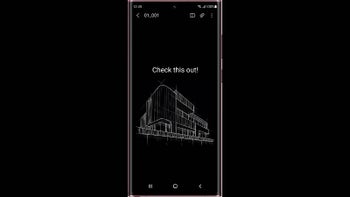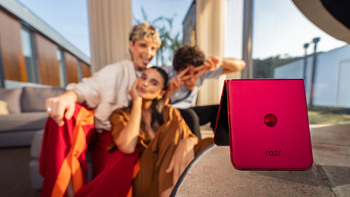One overlooked area where the Galaxy S22 trumps all other phones: coverage
We may earn a commission if you make a purchase from the links on this page.

Samsung's Galaxy S22 phones are finally official. They offer a new, slightly more powerful processor and an improved camera system, but overall, it is an iterative update if you count out the fact that the highest-end version, the Galaxy S22 Ultra, is the South Korean company's first non-Note phone to have a spot for the S Pen. PCMag has highlighted one aspect that distinguishes the series from the current best phones: the new models perform better in low signal areas.
The outlet tested the US versions, which are powered by the Qualcomm Snapdragon 8 Gen 1 and feature the Snapdragon X65 modem-RF system. The modem is equipped with an "AI-enhanced signal booster" and a new envelope tracker that enables it to improve signal strength. The Exynos 2200-fueled variants come with Samsung's modem.
Another advantage that the Galaxy S22 has over other phones is that it can connect to newer networks that older phones aren't compatible with. For instance, 4G phones cannot take advantage of T-Mobile's low-band n71 5G network which the carrier uses to extend range. Smartphones older than the Galaxy S21 cannot connect to Verizon and AT&T's C-band 5G networks which improve performance significantly. The Galaxy S22 could also be the first phone to support AT&T's new midband 5G network that will go live later this year.
Galaxy S22 offers better signal strength when it really matters
If you live in a fringe reception area with very weak signals, the Snapdragon version of the Galaxy S22 could be ideal for you. According to a test carried out by PCMag, the new phones performed better than their predecessors which feature the previous-gen X60 modem, as well as the Pixel 6 duo which has the Samsung-made 5123b modem, in low-signal areas.
The outlet tested the new Galaxy S22 Ultra and last year's S21 Ultra on T-Mobile, and the S22 Plus and S21 FE on Verizon in a range of good (>-100dBm), medium (-100 to -110), and poor (<-110dBm) signal situations.
In very low signal scenarios (below -120dBm LTE signal), the Galaxy S22 phones performed better than comparable S21 phones. The publication points out that on the S22 Ultra, this led to slower speeds. It appears that the S22 Ultra currently prefers higher-frequency primary bands, presumably because that's good from a distance perspective, but this impacts performance. It's likely that this will be taken care of by the time the phone is released on February 25.
Moving on, the latest models also did better in the medium to good range. Surprisingly, the older phones had a better signal strength in places with stronger signals.
The key takeaway here is that if you regularly face signal issues, the S22 could be a great choice for you. Even the Apple iPhone 13 has the X60 modem, so if you live in the US, the S22 is currently your best bet if you want to avoid connectivity woes.










Things that are NOT allowed: